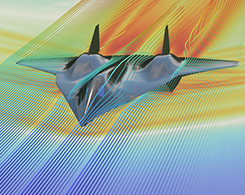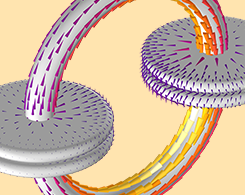Electromagnetics Blog Posts

Using Differential Inductance and Coils in COMSOL Multiphysics®
Differential inductances are useful for building simplified lumped models. Explore 4 examples of how to extract differential inductance in COMSOL Multiphysics® here.

Opening the Path to Commercial Fusion Energy with Simulation
CFS has showcased the potential of high-temperature superconductor magnets and high-field tokamaks for fusion machines. Explore how they are using modeling and simulation in their work.

Modeling a Hyperbolic Wave in a Layered Metal–Dielectric Metamaterial
Learn how model a metamaterial made of thin layers of periodically organized silver and silicon dioxide and calculate its permittivity tensor components.

Modeling a THz Photoconductive Antenna with COMSOL Multiphysics®
Photoconductive antennas are commonly used in terahertz engineering. Learn how these devices work and how to model one with the Semiconductor Module and RF Module.

Preconditioning of Surface-Mount Devices for Reliability Testing
Explore how modeling and simulation can be used to analyze the thermal stress and hygroscopic swelling of a surface-mount device through the 3 preconditioning stages.

Modeling Electric and Magnetic Fields from Power Lines
Modeling and simulation can be used to analyze fields generated by power lines, which can lead to a further understanding of how these fields interact with the surrounding environment.

Modeling the Speed and Stealth of the Darkstar
What would the shock waves around the Darkstar really look like at Mach 7.5? How stealthy is this hypersonic jet? Here, we use modeling and simulation to find out.

Learning from the Two-Capacitor Paradox: Do Capacitance and Inductance Exist?
What is the two-capacitor paradox? How can it be resolved with modeling and simulation? Do capacitance and inductance exist? Get answers here.
